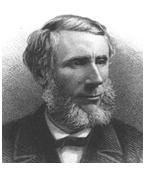One of the traditional arguments against abiogenesis was the claim that the heat used to sterilize the air or specimens was destroying a vital force of life which did not allow microorganisms to spontaneously appear. People believed for many centuries the concept of spontaneous generation, i.e. the creation of life from organic matter.
The proponents of spontaneous generation believed that living organisms could generate from non-living things. John Tyndall, an English physicist conducted his experiments in a specially designed box called “Tyndall chamber” with which he proved that dust carried germs.
He showed that dust did carry microbes, and if dust was absent the sterile broth will still remain sterile for indefinite period of time even if it was directly exposed to air. Tyndall’s work in 1877 led to the development a process called “Tyndallization” – which is used for the complete sterilization of food by alternate heating and cooling.
He observed that boiling the infusion for more than 5 hours was not sufficient enough to sterilize it, and he concluded that bacteria has both thermo-stable and thermo-labile phases, thus proving the existence of heat resistant forms of bacteria as was also confirmed by Ferdinand Cohn.
References
Barrett J.T (1998). Microbiology and Immunology Concepts. Philadelphia, PA: Lippincott-Raven Publishers. USA.
Beck R.W (2000). A chronology of microbiology in historical context. Washington, D.C.: ASM Press.
Brooks G.F., Butel J.S and Morse S.A (2004). Medical Microbiology, 23rd edition. McGraw Hill Publishers. USA. Pp. 248-260.
Chung K.T, Stevens Jr., S.E and Ferris D.H (1995). A chronology of events and pioneers of microbiology. SIM News, 45(1):3–13.
Nester E.W, Anderson D.G, Roberts C.E and Nester M.T (2009). Microbiology: A Human Perspective. Sixth edition. McGraw-Hill Companies, Inc, New York, USA.
Salyers A.A and Whitt D.D (2001). Microbiology: diversity, disease, and the environment. Fitzgerald Science Press Inc. Maryland, USA.
Slonczewski J.L, Foster J.W and Gillen K.M (2011). Microbiology: An Evolving Science. Second edition. W.W. Norton and Company, Inc, New York, USA.
Summers W.C (2000). History of microbiology. In Encyclopedia of microbiology, vol. 2, J. Lederberg, editor, 677–97. San Diego: Academic Press.
Talaro, Kathleen P (2005). Foundations in Microbiology. 5th edition. McGraw-Hill Companies Inc., New York, USA.
Discover more from #1 Microbiology Resource Hub
Subscribe to get the latest posts to your email.



